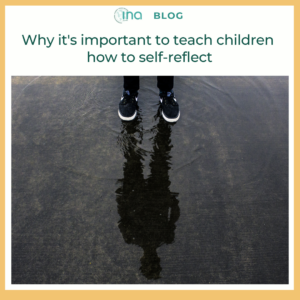 Life is busy and sometimes when we are going from thing to thing, we can forget how important it is to take some time to sit and reflect. Teaching children how to do this is a skill that helps them learn about the world around them. It can also foster a sense of gratitude and provide deeper meaning to their lives – especially as they mature.
Life is busy and sometimes when we are going from thing to thing, we can forget how important it is to take some time to sit and reflect. Teaching children how to do this is a skill that helps them learn about the world around them. It can also foster a sense of gratitude and provide deeper meaning to their lives – especially as they mature.
Ways That Self-Reflection Impacts Children
Learning: The brain of a child undergoes rapid growth and transformation in the early part of their life. They are learning how to move, communicate, process feelings, and so much more. But when they learn how to reflect on what they’re learning, it can help bolster their mental skills to better complete tasks. For example, if they are learning how to manage their time or how to complete a task that you give them, knowing how to reflect on how past experiences worked in that area will help them with future tasks or time organization. If your child learns how to reflect on their own unique learning process and what works best for them, they can better understand what their strength areas are, or which ones need improvement. This cultivates a growth mindset that helps set them up for success.
Empathy: When you teach a child how to self-reflect on what they have learned or what feedback they’ve received, it can help them understand their own thoughts and feelings. Once they have a grasp on what those feelings are, their worldview opens, helping them understand more about others. Self-reflection should help them learn to identify the emotions of other people, which creates stronger, more lasting friendships.
Regulating emotions: A child who knows how to self-reflect develops stronger emotional intelligence. In other words, they know how to respond better to various circumstances and how to manage the various emotions that come with those. Understanding how to do this keeps them more adaptable and flexible to life’s many ups and downs.
How to Teach Self-Reflection
First and foremost, model what it means to self-reflect. Show them what it means to talk about your thoughts and feelings and explain how you reflect on those to solve a problem or make an important decision. Another way to teach self-reflection is to have them write their thoughts and feelings down in a journal. Give them some quiet time to spend journaling on a regular basis. It can often be helpful to provide some open-ended questions for them to answer in their journal. And last, encourage them to use movement, art, or play therapy to express their feelings and think introspectively. Each child learns a different way, so find what works best for your child and give them the space and support to do that.
Self-reflection is a skill that isn’t learned overnight. Even as adults, it takes time and effort to reflect, so be patient and give children a safe, supportive, and self-reflective environment that helps them get in touch with who they are and what they’re feeling.
